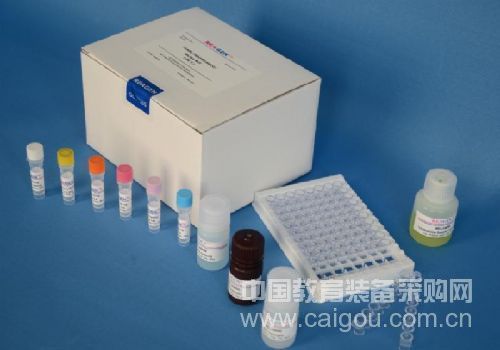1. The purpose of the experiment
1. In-depth understanding of the principle of ELISA method to determine antibody titer.
2. Master the ELISA method to determine the titer of monoclonal antibodies.
2. Experimental principle
ELISA is a highly sensitive test technique based on the immunological reaction, combining the specific reactions of antigens and antibodies with the efficient catalytic action of enzymes on substrates. Immunoenzyme technology is to label enzymes on antibody / antigen molecules to form enzyme-labeled antibodies / enzyme-labeled antigens, called enzyme conjugates. After the immune reaction, the enzyme of the enzyme conjugate acts on the substrate to make it colored, and the antigen / antibody can be located or quantified according to the presence or darkness of the color. The ELISA method is a kind of immunoenzymatic technology, which is characterized by using polystyrene micro-reaction plates (or balls) to adsorb antigens / antibodies to make them solid-phase, and immune reactions and enzymatic reactions are carried out in them. It should be washed repeatedly after each reaction, which not only ensures the quantitative relationship of the reaction, but also avoids the separation step of free antibody / antigen at the end of the reaction. In the ELISA method, the enzymatic reaction is performed only once, and the immune reaction of the antigen and antibody can be performed once or several times, that is, the secondary antibody (antibody) and the third antibody can be used to perform the immune reaction again.
Several ELISA methods commonly used at present are: indirect method for determining antibodies, double antibody sandwich method for determining antigens and competition method for determining antigens. This experiment uses an indirect method to determine the titer of monoclonal antibodies. The main process is as follows: First, adsorb the known quantitative antigen into the concave hole of the polystyrene micro-reaction plate, add the antibody to be tested, wash after incubation to remove unbound heteroproteins, add enzyme-labeled anti-antibody, wash after incubation After adding substrate for 30 minutes, acid or alkali was added to stop the enzymatic reaction, and the antibody content was determined by visual inspection or photoelectric colorimetry.
3. Instruments, raw materials and reagents
instrument
96-well polystyrene microplate, micro pipette, ELISA reader, water bath.
raw material
Monoclonal antibodies
Reagent
1. Antigen and enzyme labeled antibody
â‘ Antigen: Rabbit anti-human IgG (Rabbit Aanti-human IgG, Code No.A0423);
â‘¡Enzyme-labeled anti-antibody: Rabbit anti-mouse IgG-HRP (Rabbit Anti-mouse IgG-HRP, Code No.P0260); both
DAKO products are diluted according to the instructions in use.
4. Washing solution (PBS containing 0.05% Tween 20): Add 500μL of Tween-20 to 1L PBS.
5. Blocking solution (PBS containing 1% bovine serum albumin, 0.1% Tween 20): Add 100mg BSA, 10μLTween-20 to 10mL PBS.
6. Substrate solution
①Sodium phosphate buffer (0.1mol / LpH6.0): Weigh 2.2g of Na2HPO4 · 12H2O and 6.84g of NaH2PO4 · 2H2O, dissolve with distilled water, and bring the volume to 500mL.
② TMB stock solution: Weigh 60mg TMB in 10mL dimethyl sulfoxide and store at 4 ° C protected from light.
③ Substrate application solution: used now, 10mL sodium phosphate buffer, 10μL TNB stock solution. 15μL of 30% H2O2, mix well.
7. Stop solution: 2mol / LH2SO4
4. Operation steps
①Antigen coating: rabbit anti-human IgG as antigen, diluted 1: 8000 with coating solution, 100μL / well added to polystyrene 96-well reaction plate
in. Leave at 4 ° C overnight.
â‘¡Washing: The liquid in the concave hole is poured out the next day, and the washing liquid is washed 3 times.
③ Blocking: add lOOμL / well blocking solution and leave at room temperature for 0.5h.
â‘£Washing: Wash 3 times with washing liquid.
⑤Add the test sample (primary antibody): serially dilute the cell culture supernatant containing monoclonal antibody on another plate with PBS (according to 1: 2 or 1:10), add 100μL / well to the coated On the plate, each sample is made in duplicate, PBS or blank medium is used as a negative control, and known samples are used as positive controls. Cover and incubate in a 37 ° C incubator for 1 ~ 2h.
â‘¥Washing: Wash 3 times with washing liquid.
⑦ Add enzyme-labeled anti-antibody: rabbit anti-mouse IgG-HRP, dilute with blocking solution 1: 8000, 100 μL / well, incubate with lid at 37 ℃ incubator for 1 hour.
⑧ Washing: 5 times with washing solution and 2 times with distilled water.
⑨ Color development: add 100μL / well of freshly prepared substrate solution, and place it in a dark place at room temperature for 5 ~ 30min, showing blue color.
⑩Stop reaction, colorimetric: add 50μL / well stop solution. The color turns yellow; use a microplate reader to measure the absorbance of each well at 450nm. The maximum dilution of the positive reaction is the potency of the sample to be tested.

Face Recognition Thermometer, Body Temperature Thermal Scanner, Non-Contact Face Recognition Temperature Measurement
Guangzhou Ruixin Touch Control Technology Co., Ltd. , https://www.weetaach.com